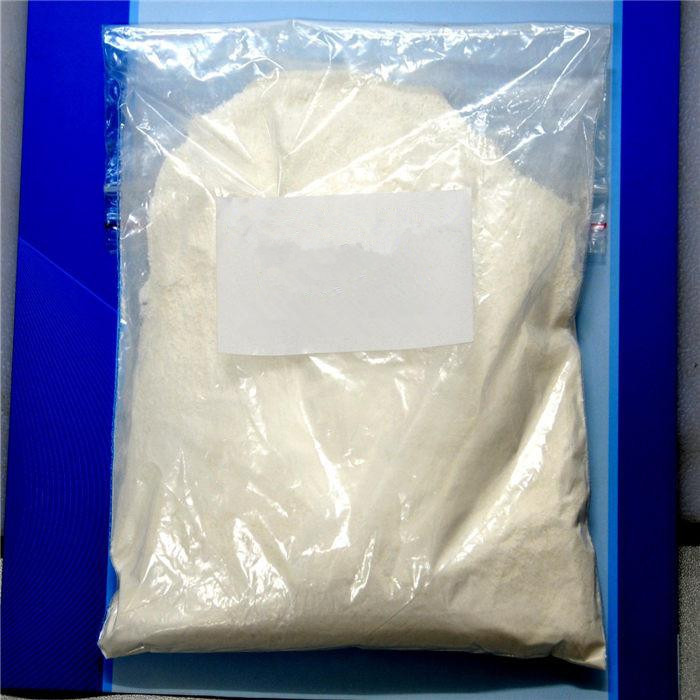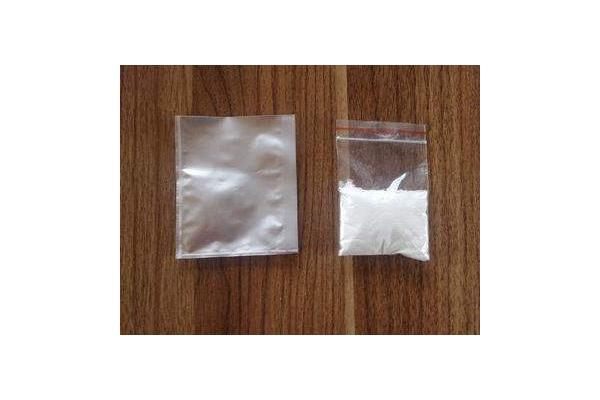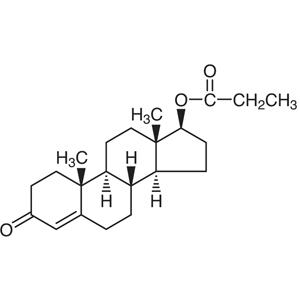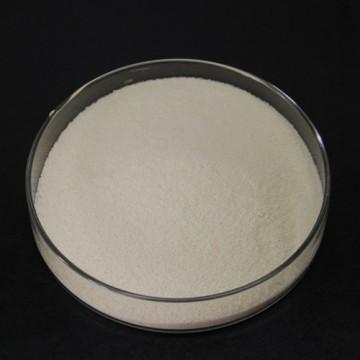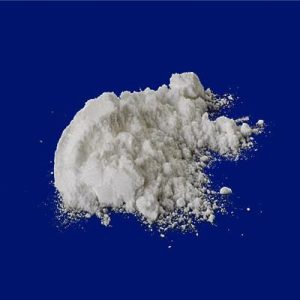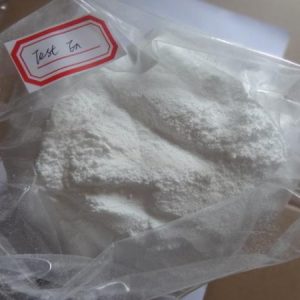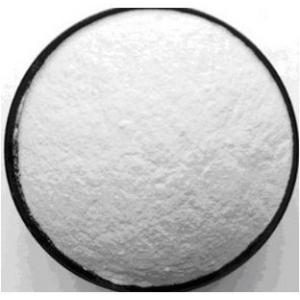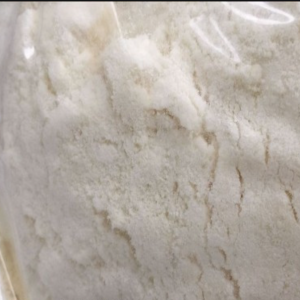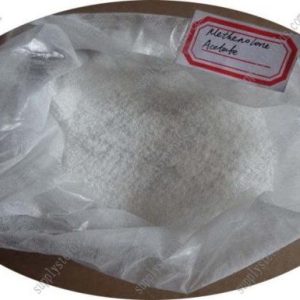what is Testosterone propionate, sold under the brand name Testoviron among others, is an androgen and anabolic steroid (AAS) medication which is used mainly in the treatment of low testosterone levels in men.It has also been used to treat breast cancer in women. It is given by injection into muscle usually once every two to three days.
Testosterone Propionate Side Effects
Side effects of testosterone propionate include symptoms of masculinization like acne, increased hair growth, voice changes, and increased sexual desire. Testosterone supplementation is also known to reduce the threshold for aggressive behavior in men. The drug is a synthetic androgen and anabolic steroid and hence is an agonist of the androgen receptor (AR), the biological target of androgens like testosterone and dihydrotestosterone (DHT). It has strong androgenic effects and moderate anabolic effects, which make it useful for producing masculinization and suitable for androgen replacement therapy. Testosterone propionate is a testosterone ester and a relatively short-acting prodrug of testosterone in the body. Because of this, it is considered to be a natural and bioidentical form of testosterone.
History
Testosterone propionate was discovered in 1936 and was introduced for medical use in 1937. It was the first testosterone ester to be marketed, and was the major form of testosterone used in medicine until about 1960.The introduction of longer-acting testosterone esters like testosterone enanthate, testosterone cypionate, and testosterone undecanoate starting in the 1950s resulted in testosterone propionate mostly being superseded. As such, it is rarely used today. In addition to its medical use, testosterone propionate is used to improve physique and performance.
Applications
Testosterone propionate is often used for muscle mass building. The original medical indication is for the treatment of androgen deficiency in male adults either in hypogonadism or andropaus. Nowadays testosterone propionate is indicated for its use in heifers in order to stimulate maximal growth.
Hypogonadism(the late puberty and premature termination of adolescent growth, some types of impotence) is the most common indication for AAS therapy in men. At present, The United States Food and Drug Administration(FDA) approved clinical use of AAS for treatment of hypogonadism, anemia accompanying renal and bone marrow failure, endometriosis, cancer and wasting syndrome in human immunodeficiency virus infection. The other clinical uses of AAS include treatment of catabolic states and cachexia(i.e chronic obstructive pulmonary disease), corticosteroid therapy, osteoporosis, growth stimulation in male puberty, prophylaxis for hereditary angioedema, hepatic disease, and female to male transsexualism, hypoplastic anemia, multiple sclerosis, sexual dysfunction and depression.
Testosterone is also available in several different pharmaceutical formulations and is recommended for use in veterinary medicine to treat chronic wasting conditions and improve appetite and physical appearance. In addition, veterinary compounding pharmacies offer for sale numerous testosterone ester preparations in oil and testosterone suspension in aqueous vehicle.testosterone propionate for sale
Pharmacodynamics
The administration of testosterone propionate can induce production of proteins related to male sexual development. On the other hand, testosterone itself present an estrogenic activity due to interaction with aromatase enzyme, thus the continuous administration of testosterone propionate may cause the elevation of plasma estrogen. Clinical trials showed as well, a decrease in plasma LH after testosterone propionate administration.
Mode of action Anabolic steroids are thought to exert their actions by several different mechanisms. These mechanisms include modulating androgen receptor expression as a consequence of[i] intracellular metabolism and by[ii] directly affecting the topology of the androgen receptor and thus subsequent interaction with co-activators and transcriptional activity. Other mechanisms include[iii] an anticatabolic effect by interfering with glucocorticoid receptor expression; and[iv] by non-genomic, as well as by genomic pathways, in the CNS resulting in behavioural changes. These mechanisms are discussed herein. Free testosterone[T] is transported into the cytoplasm of target tissue cells, further binding to the androgen receptor, or being reduced to 5alpha-dihydrotestosterone(DHT) by the cytoplasmic enzyme 5alpha-reductase. The binding areas are called hormone response elements(HREs), and influence transcriptional activity of certain genes, producing the androgen effects.testosterone propionate for bodybuilding.
Side Effects
Testosterone Propionate side effects Adverse reactions and precaution Testosterone propionate is a kind of AAS. The most common reversible side effect of AAS is cosmetic in nature. The orally used AAS may cause hepatotoxicity. However there is no report describing hepatotoxicity due to use of parenteral AAS preparations, which appear to damage heart muscles in long-term use. There are several side effects of AAS use such as; headaches, gastrointestinal irritation, fluid retention in the extremities, diarrhea, stomach pains, oily skin. Additionally jaundice, menstrual abnormalities, hypertension and infections at injection site may be observed. Acne develops in both sexes at puberty during treatment with AAS due to secretion of the natural oil sebum and growth of sebaceous glands. Males using high doses of AAS may have elevated circulating estrogen levels similar to women during a normal menstral cycle. This effect is result of aromatization of testosterone in part to estrogens. Therefore, gynecomastia and breast pain may be observed in men taking high doses of AAS.
Chronic adverse effects associated with AAS
Abuse include acne, urogenital problems, endocrine abnormalities, neuropsychiatric disorders, hepatic and cardiovascular diseases. Acne is common adverse effect of AAS use seen in almost 50% of the androgen uses. Acne fulminans and acne conglobata are the most common forms of acne associated with AAS. Subjects using AAS should be warned that acne associated with AAS can get worse with vitamin B supplement. Gynecomastia and suppression of spermatogenesis are frequent consequences of AAS use. High dose of AAS suppresses the hypothalamic-pituitary-gonadal axis due to negative feedback and, it may take weeks or months for the axis to recover. Consequently atrophy of the seminiferous tubules during this time may result in subfertility or infertility. Furthermore, subjects may continue to encounter symptoms of hypogonadism[erectile dysfunction, low libido and low vitality] even after discontinuation of AAS until the axis recovers. Recent reports suggest that use of clomiphene citrate may hasten the recovery of gonadal axis.
testosterone propionate half life The terminal half-life of testosterone propionate is approximately 19 hours, and thus suggested injection intervals are every 2–3 days to achieve maintained therapeutic response
Product Name: Testosterone propionate
Synonyms: TESTOSTERONE PROPIONATE;TESTOSTERON 17-PROPIONATE;TESTOSTERONE 17-PROPIONATE;nsc9166;Okasa-mascul;Orchiol;Orchisterone;Orchistin
CAS: 57-85-2
MF: C22H32O3
MW: 344.5
EINECS: 200-351-1
Product Categories: Steroids;Inhibitors;API;testosterone;Metabolites & Impurities, Pharmaceuticals, Intermediates & Fine Chemicals, Steroids;VIRORMONE;Intermediates & Fine Chemicals;Metabolites & Impurities;Pharmaceuticals;Steroid and Hormone;Finished Steroid and Hormone;Hormone Drugs;57-85-2
Mol File: 57-85-2.mol
Testosterone propionate Chemical Properties
Melting point 118-123 °C
alpha D25 +83 to +90° (100 mg in 10 ml dioxane)
Boiling point 419.57°C (rough estimate)
density 1.0906 (rough estimate)
refractive index 1.5000 (estimate)
storage temp. Store at -20°C
solubility ethanol: 10 mg/mL
form solid
color white
Water Solubility <0.1 g/100 mL at 24.5 ºC
Merck 13,9255
BRN 3221760
InChIKey PDMMFKSKQVNJMI-BLQWBTBKSA-N
CAS DataBase Reference 57-85-2(CAS DataBase Reference)
NIST Chemistry Reference Androstene-17(beta)-propionate-3-one,delta8-(57-85-2)
EPA Substance Registry System Testosterone propionate (57-85-2)
